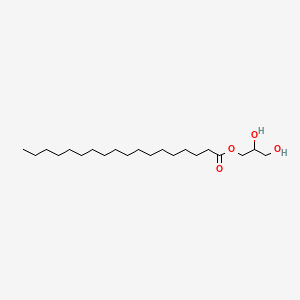
|
Glyceryl monostearate |
Glyceryl monostearate is a lipid of Glycerolipids (GL) class. |
353 |
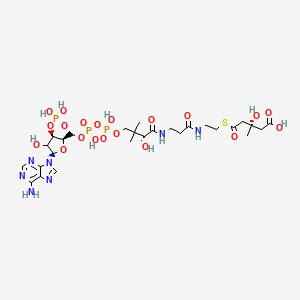
|
HMG-CoA |
Hmg-coa is a lipid of Fatty Acyls (FA) class. Hmg-coa is associated with abnormalities such as Cardiovascular Diseases, Hypercholesterolemia, Metabolic Diseases, Hyperhomocysteinemia and Morphologically altered structure. The involved functions are known as ketone body biosynthetic process, Regulation, Mutation, enzyme activity and HMG-CoA synthase activity. Hmg-coa often locates in Mitochondria, Cytoplasmic matrix, Hepatic, Membrane and Flank (surface region). The associated genes with HMG-CoA are Human gene, HMGCS2 gene, PPARA gene, ACSL1 Gene and Candidate Disease Gene. The related lipids are Fatty Acids, Sterols, Dehydrocholesterols, Lipopolysaccharides and 7-dehydrocholesterol. |
355 |
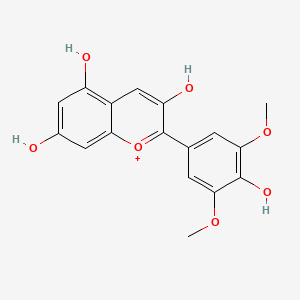
|
Malvidin |
Malvidin is a lipid of Polyketides (PK) class. The involved functions are known as conjugation. |
363 |
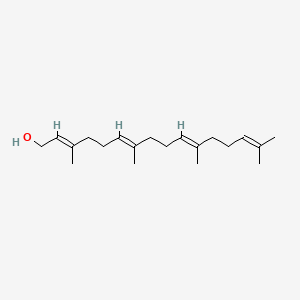
|
Geranylgeraniol |
Geranylgeraniol is a lipid of Prenol Lipids (PR) class. Geranylgeraniol is associated with abnormalities such as abnormal fragmented structure, Hyperostosis, Diffuse Idiopathic Skeletal and Tuberculosis. The involved functions are known as Positive Regulation of Apoptosis, Anabolism, Prenylation, Apoptosis and pathologic cytolysis. Geranylgeraniol often locates in Body tissue, Cytoplasmic matrix, Red Cell Ghost, Spindle and Nuclear lamin. The associated genes with Geranylgeraniol are MST1 gene, STN gene, UMOD gene, ABCA1 gene and RHOA gene. The related lipids are Sterols, Hydroxycholesterols, SK&F 104976 and 25-hydroxycholesterol. |
403 |
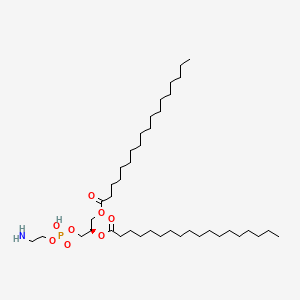
|
1,2-Distearoyl-sn-glycero-3-phosphoethanolamine |
1,2-Distearoyl-sn-glycero-3-phosphoethanolamine is a lipid of Glycerophospholipids (GP) class. 1,2-distearoyl-sn-glycero-3-phosphoethanolamine is associated with abnormalities such as Painful Bladder Syndrome, Dehydration, Renal tubular disorder, Gigantism and Tumor-Associated Vasculature. The involved functions are known as conjugation, Ligand Binding, Process, Laser-generated electromagnetic radiation and Blood Circulation. 1,2-distearoyl-sn-glycero-3-phosphoethanolamine often locates in Tissue membrane, Early endosome, Body tissue, Cell surface and Membrane. The associated genes with 1,2-Distearoyl-sn-glycero-3-phosphoethanolamine are R peptide, P4HTM gene, NHS gene, TSPO gene and SLC33A1 gene. The related lipids are Liposomes, 1,2-distearoylphosphatidylethanolamine, Micelles, Fatty Acids and sialogangliosides. |
438 |
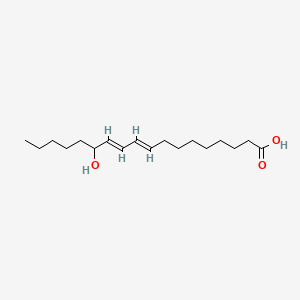
|
alpha-artemisic acid |
Alpha-artemisic acid is a lipid of Fatty Acyls (FA) class. |
448 |
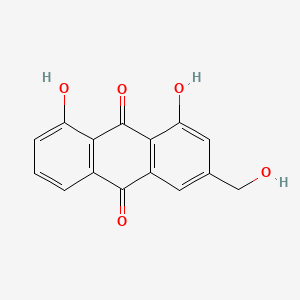
|
Aloe-emodin |
Aloe-emodin is a lipid of Polyketides (PK) class. Aloe-emodin is associated with abnormalities such as Wiskott-Aldrich Syndrome. The involved functions are known as Anabolism, Phosphorylation, Signal Transduction, Cell Proliferation and Cell Survival. Aloe-emodin often locates in Body tissue, Cell Fraction, Mitochondria, Micronucleus and Microsomes, Liver. The associated genes with Aloe-emodin are MECHANISTIC TARGET OF RAPAMYCIN COMPLEX 2, RICTOR gene, PI3 gene, PRR5 gene and MANEA gene. |
451 |
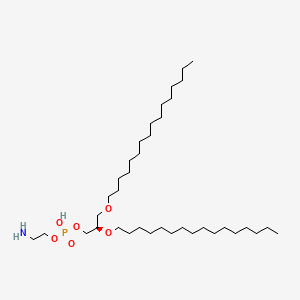
|
61423-61-8 |
61423-61-8 is a lipid of Glycerophospholipids (GP) class. 61423-61-8 is associated with abnormalities such as Superficial ulcer, Spastic syndrome, Morphologically altered structure, Dysentery, Shigella dysenteriae and Cholera. The involved functions are known as Force, vesicle fusion, Physiologic Organization, Drug Interactions and Pressure- physical agent. 61423-61-8 often locates in biological membrane, Tissue membrane, Head, Membrane and Cell membrane. The associated genes with 61423-61-8 are ATR gene, glycyl-glycyl-glycine, Protein Structure, Polypeptides and MCC gene. The related lipids are 1,2-oleoylphosphatidylcholine, proteoliposomes, Sphingolipids, Sterols and DOPE. |
457 |
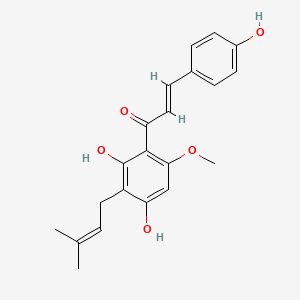
|
Xanthohumol |
Xanthohumol is a lipid of Polyketides (PK) class. Xanthohumol is associated with abnormalities such as Endometriosis, site unspecified, Cyst, peritoneal lesion, Proliferative inflammation and furuncle. The involved functions are known as Cell Proliferation, Signal Transduction, Pathologic Neovascularization, Adverse effects and Proliferation (morphologic abnormality). Xanthohumol often locates in peritoneal, Mesentery, Membrane, Tissue specimen from uterus and Cell Nucleus. The associated genes with Xanthohumol are PI3 gene, KEAP1 gene, SLC33A1 gene, BCR-ABL Fusion Gene and BIRC5 gene. The related lipids are Fatty Acids and Palmitates. The related experimental models are Knock-out. |
465 |
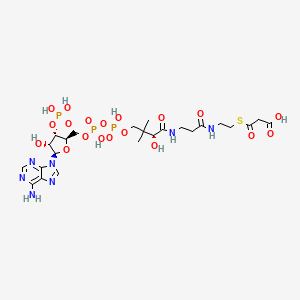
|
Malonyl-coa |
|
492 |









